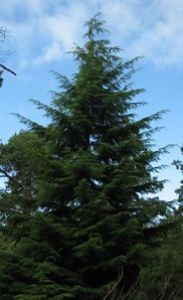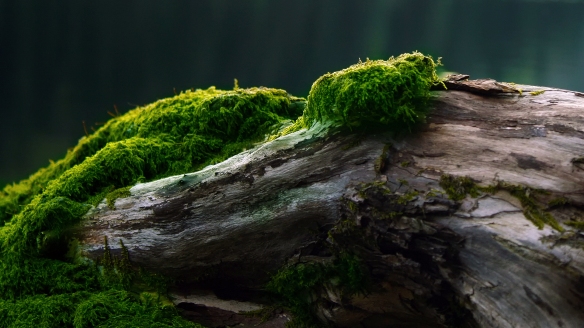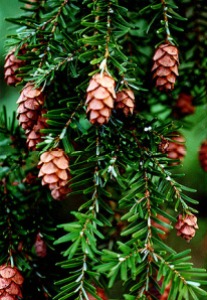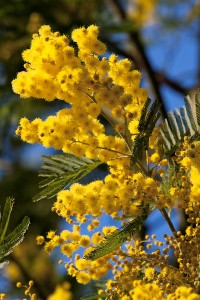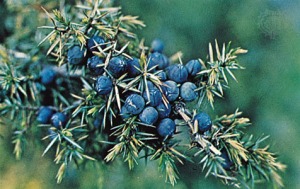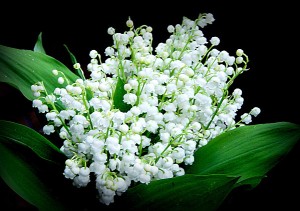If a perfume were a painting, I think Ormonde Woman would be one of Thomas Gainsborough’s famous landscapes. The perfume by the niche luxury house of Ormonde Jayne is reminiscent of the famed 18th century painter’s portrayal of nature, all bright light contrasted by dark intensity, hidden mystery, and hints of rich warmth. Gainsborough created a dream-like, hazy impression through soft brush strokes and, yet, there is the dark verisimilitude of the Dutch painters, like Rubens, who inspired him. Light and dark, depth and surfaces, reality and a dream — it is all simultaneously evoked by the brilliance that is Ormonde Woman.
The unisex perfume was the very first fragrance put out by Ormonde Jayne upon its debut in 2002, and it is the luxury perfume house’s signature scent. It is a scent of some renown, has received a five-star rating and was named as one of the 100 great classics by the perfume expert, Luca Turin, in The Little Black Book of Perfume: 100 Great Classics.
I’d heard vague, breathy mentions from people of this “amazing” scent, but never really paid much heed until some months ago when one of my oldest friends — who knows almost nothing about perfume — asked me about it. I was so taken aback by her interest (and in a niche perfume, no less!) that I ordered a sample. In all honesty, it took me months to get around to testing Ormonde Woman because I tend to be put off by things with a lot of hype. (I still haven’t seen the movie, Titantic. And I never will.) So my first foray into the Ormonde Jayne brand was with Tolu. It captivated me and rendered me weak with joyous admiration. It also made me determined to explore the brand’s signature perfume. And, you know what? The hype over Ormonde Jayne is fully warranted! 
Ormonde Jayne is described on Fragrantica as a chypre, but I think Tania Sanchez has a better description in her book with Luca Turin entitled Perfumes: the A-Z Guide. There, she categorizes it as a “forest chypre.” (In a nutshell, a chypre perfume is a scent that begins with citrus notes and ends with either oakmoss, patchouli, musk, or some combination thereof. You can read a more detailed explanation of the important chypre category of fragrances in the Glossary.) Ms. Sanchez’ five-star review of Ormonde Woman helps explain, in part, why the perfume is so special:
Of the many feminine perfumes since [Chanel’s] Bois des Iles that have been composed around woody notes, the others that I can recall have been cozy, powdery-rosy, touched with mulling spices, with the warm furred feeling of a napping cat by the fire, or, more recently, hippie-inspired simple concoctions meant to evoke mostly the gorgeous smell of hard-to-get sandalwood oil. Ormonde Woman is the only abstract woody perfume I know that triggers the basic involuntary reflex, of stepping into a forest, to fill one’s lungs to bursting with the air. This is a full-fledged perfume with all of the sophistication of Bois des Iles and its ilk, but none of the sleepy comfort. Instead, it has the haunting, outdoors witchiness of tall pines leaning into the night — a bitter oakmoss inkiness, a dry cedar crackle, and a low, delicious, pleading sweet amber, like the call of a faraway candy house. Lulling and unsettling in equal measure, and truly great.
I agree in large part with Ms. Sanchez’s review. I certainly agree that Ormonde Woman can be lulling and unsettling in equal measure, but I would also add some other adjectives to the mix: “mesmerizing,” “hypnotic,” and “unisex” for starters. However, I think it’s almost regrettable that she used the word “witchiness” in her paean to the perfume. It has led to a plethora of reviews talking about Ormonde Woman’s witchy aspect with a few unsettled posters even writing that they feel it is a scent best suited for Halloween. I think the adjective minimizes the perfume to something that is only a tiny part of its essence, and hardly the sum total.
The source of all this magical business stems from one simple cause: Black Hemlock. It is the key to the Ormonde Woman and, though it may conjure up images of warlocks and witches, it is actually just a type of spruce tree. To be more specific, it is the name for a pine tree of the Tsuga genus. Ormonde Jayne was the very first perfume house to use the ingredient — a sign of its innovative, creative approach to perfumery — and, according to Wikipedia, others have followed suit.
Linda Pilkington, the founder, nose and soul behind the Ormonde Jayne brand, talked about the Black Hemlock note and the persona of the Ormonde Woman with the blog Riktig Parfym (formerly Fragrant Fanatic). I highly recommend reading the interview; there, as in all the other interviews that I’ve read with Ms. Pilkington, she comes across as charming, down-to-earth, self-deprecating, open, direct, and full of warmth. (I realise that I’m starting to sound like a crazed “fan girl,” as Americans put it, about Ms. Pilkington. I plead guilty.) Her explanation of the ingredient is as follows:
Ormonde Woman is based on hemlock and there are 3 types of hemlock. There is the tree, the bush and the plant. The plant (which is not the hemlock used in OW) is poisonous and if you boil it and then drink the water you’ll first get a sensation that you’re feet are numbing and as the poison spreads through your body, you get paralyzed and die. This was used in 15th-16th centuries as a womans way to murder a man. As a woman usually is physically weaker she cannot strangle a man, but to boil a plant and put into his food isn’t usually a problem. And it’s still done today. So, the persona of Ormonde Woman is a woman who knows what she wants. She has long raven colored hair, wears a long black cape and rides through the woods at night, maybe to meet a lover?
Ormonde Woman and its notes are described on the company’s website as follows:
Beginning and ending with the unique scent of Black Hemlock absolute – rarely used in such luscious quality and quantity – this utterly hypnotic, unconventional and mysterious woody essence is combined with jasmine and violet absolute to create a dusky, seductive perfume.
Top Notes: Cardamom, coriander and grass oil
Heart Notes: Black hemlock, violet and jasmine absolute
Base Notes: Vetiver, cedar wood, amber and sandalwood.
Ormonde Woman opens on me with fresh, zesty citrus, bitter resin, a massive dollop of spice, and bright greens. At first, I thought it was like spicy grass but, after some contemplation, I think it’s more like fresh moss. Not oakmoss, per se, or, at least, not the usual oakmoss. There is none of the pungent, almost dusty, grey-mineralised aspects of the note. Instead, this is like the brightest moss were it jade green, wet from
dew, and covered with amberous spices. People are right when they say that it evokes the green, mossy floor of a forest. It is almost tinged with dark shadows; there is none of the sweet mildness of freshly cut grass on a summer’s day. That comes later. For now, the moss is wet and tinged by the cedar and sandalwood trees around it.
Yet, the real focus in the opening hour is the Black Hemlock. It is fascinating. Resinous evergreen with burnt notes and black licorice. The strength and prominence of the note seems to vary widely with the amount of the perfume used. In fact, I think the quantity you use may dramatically change your impression of the opening. The first time I tested Ormonde Jayne, I didn’t dab on a lot; only 2-3 tiny blots from the vial on each arm. With that amount, the Black Hemlock note was prominent, but not the sole focus. The second time, I dabbed on quite a bit (4-5 smears, approximating 2 big sprays per arm). The  result was as if a black cloud had suddenly descended upon the forest. There was a massive, monumental dose of black licorice, much more of a burnt aroma, and a contrasting cool, chilled, mentholated impression. For some reason, it calls to mind the image of something like tar. Not the tar that they use to pave roads but, rather, the treacly, thick, blackish paste found in Marmite. Actually, there is more than just a visual similarity to Marmite. There is a quiet saltiness underpinning the sweet spice. It’s faint, flickering in the background like a ghost, but it’s there.
result was as if a black cloud had suddenly descended upon the forest. There was a massive, monumental dose of black licorice, much more of a burnt aroma, and a contrasting cool, chilled, mentholated impression. For some reason, it calls to mind the image of something like tar. Not the tar that they use to pave roads but, rather, the treacly, thick, blackish paste found in Marmite. Actually, there is more than just a visual similarity to Marmite. There is a quiet saltiness underpinning the sweet spice. It’s faint, flickering in the background like a ghost, but it’s there.
In greater doses, the spice accords in the perfume also gain heft, and my impression of bright green grass or dewy moss become much less. The faintly lemony note of coriander and the lightly spice earthy-sweet notes of the cardamom were much more noticeable. But something else was apparent. Star anise. I could swear that I smelled the Chinese Five Spice mix, dominated by its star anise element. There was also a strong impression of spiced wood, almost like a faintly dusty spice drawer in an old cabinet where the wood has absorbed decades of strong spices.
The licorice was not only more prominent in greater doses the second time round, but so too were the mentholated, chilled camphor notes and the evergreen. Having never smelled Black Hemlock prior to now, I have no idea if the minty-mentholated notes come from the cedar or from the spruce/pine tree. Regardless, they become stronger and stronger until — 30 minutes in — the predominant note emanating from my arm is pine needles. They’re so fresh and concentrated, it’s as though you scraped them right off the tree and crushed them between your fingers.
An hour in, the pine needles fade and have their place taken by sandalwood. Ormonde Woman is actually the first time in a long time that I’ve smelled real, actual, genuine sandalwood in a truly prominent way. A large portion of the perfumes which claim to have that rare, exorbitantly expensive ingredient and which I’ve tested lately seem, to me, to have absolutely no visible, noticeable traces of it at all. In truth, after the recent test of one perfume which claimed to have sandalwood in its notes, I was starting to wonder if I even knew what it smelled like anymore.
Well, it’s here. And, it’s not synthetic! It is sweet, lightly smoky, like creamed honey and molten resin mixed with wood. I’m rather awed by its strength and character, given the scarcity of true sandalwood and its cost. In fact, the strength of the note here makes Ormonde Woman a modern call-back to those rich sandalwood orientals of the 1970s and 1980s, before the Mysore wood was over-harvested and had to be placed under government protection. The sandalwood mixes with a faintly aromatic, woody, cedar-y scent; with the slightly green-sweet-earthy aspect of cardamom; with the bright, dewy, wet moss; and with a vague breath of something floral. It is a play on bitter and sweet, woody and green, wet and dry.
That vague floral note soon turns into pure, sweet jasmine. Ms. Pilkington has said she likes to work with hedione, a compound often used in conjunction with Jasmine Absolute (which is a part of Ormonde Woman). Hedione lends a vaguely green, fresh tone to the jasmine here. When combined with the lemony fresh notes of the coriander, they cut through any possible indolic heaviness that the flower may have, leaving only sweetness and brightness. I’m afraid that jasmine is the only real floral note that I can smell; in neither of my two tests could I really smell the violets that others have noted. Frankly, violet seems like such a dainty flower that I don’t know how it could possibly compete with the heavy woods, the faintly smoke elements, the resins and the spices.
In the middle stage and the final dry-down, those latter accords still remain. On me, it’s all creamy, delicious, intoxicating sandalwood, resinous amber, and faintly lemony wood. There is still a faintly tarry, smoky note, though the mentholated, almost camphorous notes of the cedar (and Black Hemlock?) have mostly dissipated. There is also the mild sweetness of summer’s grass and the earthy greenness of vetiver dancing in the shadows, faint but there nonetheless.
I have the oddest visual image in my mind: a large, chewy, sort of brownie square. It’s tarry, black, smoky, and moist with bits of light-brown cedar chips sticking out of it and chunks of chilly black licorice. It’s speckled with little glowing orbs of sweet, honeyed amber that dot its surface and the whole thing is wrapped in a box filled with jade-green, dewy moss, sweet emerald-green grass, and delicate white jasmine.
But, most of all, I feel as though I have entered a Gainsborough landscape through a dream. To me, Ormonde Woman is a perfume of great contrasts where the woods are dark and mysterious, drawn in realistic detail, but there are contrasts of shining bright light and parts where everything is soft, hazed, romantic and dreamy. One is jolted at first, then enveloped in softness. Based on my experience with Tolu, I think such contrasts are something that Ms. Pilkington does very well. They are also one reason why there is such depth and complexity to her scents.
It is utterly mesmerizing, and most definitely unisex. Not feminine, but unisex! I’ve read that the men’s counterpart, Ormonde Man, has oudh and pink peppers in it, and that it’s supposed to be much less sweet. I haven’t tried it to know but, frankly, I think a man would smell divine in Ormonde Woman. In fact, it seems to be a big hit with men due to the strongly woody notes and the Black Hemlock.
That said, I don’t think Ormonde Woman is for everyone. It will be too masculine for women who prefer lighter, sweeter or floral scents. My friend who initially asked me about it months ago enjoys light, airy, fresh green scents; for someone like her, Ormonde Woman would be far too much: too tarry, too spicy, too woody. In addition, the bitter aspect of Black Hemlock seems to have been a problem for a number of people, leading them to react quite strongly. Interestingly, a few perfume bloggers who recoiled upon first essay ended up falling in love with the fragrance some time later after trying it again. So much so that they bought a full bottle!
On Fragrantica, one male poster, “smcandsmc,” wrote something that I think sums up the fragrance perfectly:
Stunning. Wow. Grassy top lifted me off the ground, gorgeous rich middle keeps me suspended in mid air. […] Seriously having an out of body experience over this. Plotzing. When I read rhapsodic descriptions of the vintage classics in their vintage formulations that I will never experience, this is the depth, richness and quality I imagine.
The superb richness and quality that “smcandsmc” noted is a key characteristic of Ormonde Jayne scents. The perfumes consistently scream high-quality luxury in a way that has utterly transfixed me. I’m sure there will be some in the line that won’t suit my personal style, but the quality of those I’ve tried thus far cannot be denied. They have been outstanding across the board. You can tell that the highest quality ingredients were used in order to create the most luxurious, wonderfully indulgent, seductive experience possible. And the fragrances repeatedly meet the brand’s overall philosophy:
quality and true luxury, the pursuit of beauty and elegance. […]
[The return] to the golden age of perfumery, an elegant era when fragrance creation was a fine art.
Perhaps more importantly, Ormonde Jayne fragrances are approachable and wearable. They are not edgy, sometimes discordant, intellectual art that you would admire but rarely (or, in some cases, never) wear. I can see women and men alike wearing Ormonde Woman frequently, whether on special occasions, for a casual dinner, or just simply to the office (though I would advise caution with regard to the quantity used if you plan on wearing it there). Ormonde Woman has a high degree of concentration: 25% in its most basic form (which seems more akin to extrait de parfum for some other lines), so the sillage can be very strong depending on the amount sprayed. On me, Ormonde Woman wasn’t as strong or potent as Tolu, but it had good sillage for the first two hours, becoming close to the skin around 3 to 3.5 hours in. As a whole, it lasted around 6.5 hours on my perfume-consuming skin. On others, it generally seems to last a long time (8-10), though I’ve read some conflicting reports of its tenacity.
I could go on and on about both Ormonde Woman and the Ormonde Jayne line itself. Truth be told, my initial draft was well over 4,000 words! I have struggled to give you the essence without sounding like a crazed loon but, if space and my readers’ valuable time (not to mention patience) were not an issue, I would wax rhapsodic for several more hours about the astounding quality of the brand. The depth, the richness, the luxuriousness, the ease with which the perfumes transport you elsewhere upon first whiff, their almost lyrical nature….. it is a return to the “golden age of perfumery” indeed.



